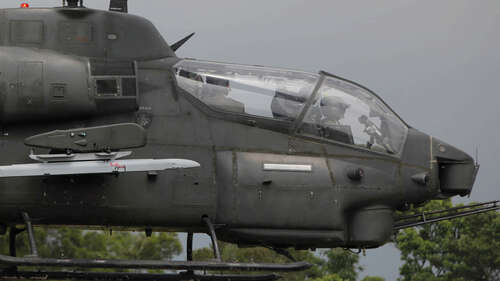
Such a solid foundation resulted in the first Cobra being further adopted, adapted, and improved upon. Perhaps the most significant addition to the family was the AH-1J or SeaCobra. This model, adapted for use by the Marine Corps, was equipped with two Pratt & Whitney T400-CPs, which further boosted its speed up to 207 mph.
The AH-1J contributed to high-profile operations throughout the 1970s, seeing the United States out of the Vietnam War and beyond. 1978 marked the introduction of the AH-1T, a model that was a further step above with improved Model 309 engines and transmission. The idea seemed to be for the most potent and capable AH-1 yet, but something even greater would arrive eight years later: The SuperCobra.
This model, named the AH-1W, first entered service with the Marine Corps in 1986. It embraced the common concept that two engines are better than one. Specifically, it was equipped with two General Electric T700-GE-401 engines, which gave it a range of just under 300 miles and the power to hit 169 mph. Needless to say, though, one of the most important aspects of the SuperCobra’s development was the broadening of its arsenal of weapons. It was expanded to include the likes of Sidewinder and Hellfire missiles, thereby giving the helicopter further options against more difficult armored targets.

